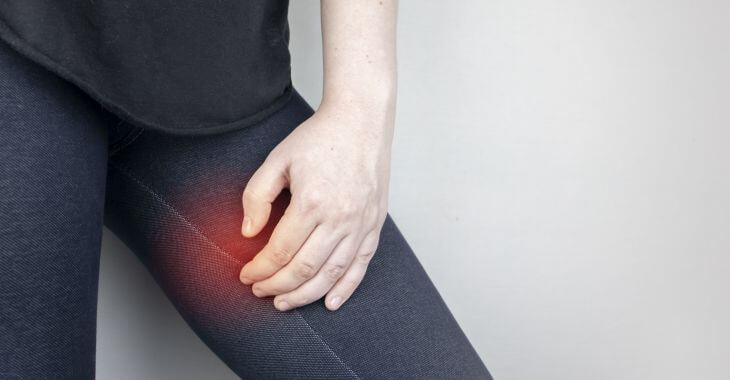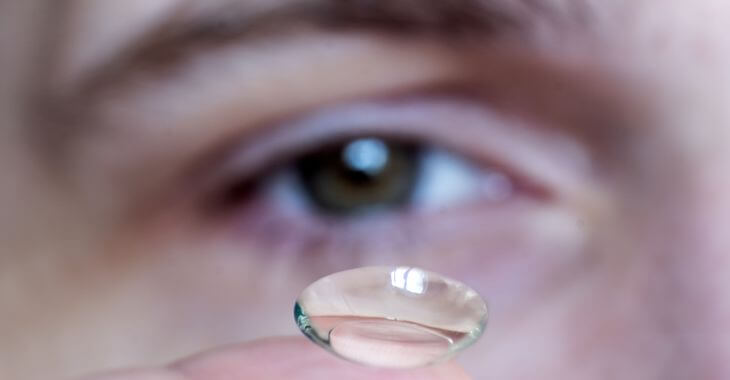What Causes Upper Inner Thigh Pain?

If you have pain in the inner thigh near the groin, it may not be a pulled muscle or strain. While it is possible to injure a muscle or tendon in this area, it could also be a type of hernia or other serious medical condition. Knowing the possible causes of upper inner thigh pain can help you determine when and if you should seek medical attention or a diagnosis from your doctor. There are a couple of possible causes of upper thigh pain and other symptoms that can help you decide whether or not to make an appointment with your doctor.
- Muscle or Groin Strains
- The most likely and common cause of pain in the inner thigh near the groin is a strain. Pulling or tearing a muscle or tendon in the quadriceps or groin can cause pain and limit mobility, but most injuries will heal in a few weeks. In severe tears, a groin strain could require surgery, but these are rare with a normal activity level. Wrapping the upper thigh to protect the injured muscle or tendon, resting, applying ice and elevating your leg can help alleviate pain and improve healing for a strain.
- Hip Joint Problems
- Even though you have pain in the inner thigh near the groin, the cause of the pain may be on the outside of your pelvic area. Hip joint impingement or arthritis can result in upper inner thigh pain. A deformity in your hip joint can cause hip impingement that can put stress on the groin, and you may have upper inner thigh pain when walking. The pain may be worse after sitting for long periods or when performing activities that rotate the leg or hip.
- Another hip joint condition that may result in groin or inner thigh pain is arthritis. Osteoarthritis is the most common type of arthritis, resulting from wear, tear and injury to the joints that cause cartilage loss and inflammation. Inner thigh pain caused by hip osteoarthritis will usually occur on only one side and when you are walking or engaged in activity.
- Hernias
- A hernia occurs when tissue pushes through a weak area in the abdominal cavity. Hernias can occur in the groin area and can be a serious medical condition. Inguinal hernias are the most common to occur in the groin. On top of upper inner thigh pain, there may be a protruding lump that is red or purple near where the thigh meets the pelvis. The pain can be worse when lifting or straining – coughing or pushing during a bowel movement can cause groin hernia pain. Hernias can become life-threatening and require medical attention.
- Kidney Stones
- Kidney stones can cause pain that radiates down into your inner upper thighs. These stones are made from mineral buildup in the kidneys and can result in stones that can travel through the urinary tract. You may experience pain in the lower back that radiates down to your upper inner thighs or groin. Most kidney stones will pass naturally through the urinary tract, but in some cases, they may require medical treatment if they cause a blockage.
- Blood Clot or Deep Vein Thrombosis (DVT)
- One of the more serious causes of upper inner thigh pain is a blood clot or deep vein thrombosis (DVT). This type of blood clot occurs in a major vein and can be deadly. DVT is often in the calves, but it can occur in the thigh. On top of inner thigh pain, the area can be tender, warm and become discolored. DVT can cause a pulmonary embolism – if you have symptoms of DVT, you should seek immediate medical attention.
- Pregnancy
- Pelvic and groin pain during pregnancy is common. Pressure put on the pelvic area can result in pain in the upper thigh near the groin. Those with inner thigh pain during pregnancy should speak to their doctor or OB/GYN to discuss exercises to help strengthen the pelvic floor to reduce pain and discomfort.
- IT Band Syndrome
- The iliotibial band, or IT band, is a fibrous tissue that connects the outer hip and the top of the tibia (shin bone), supporting the outer thigh and knee. IT band syndrome occurs when the IT band is irritated and becomes inflamed. It normally can cause knee pain, but it can also cause pain in the thigh that radiates to the inner thigh. IT band syndrome can go away on its own but may require anti-inflammatory medications or physical therapy for pain relief.

As you can see, there are many possible causes of upper inner thigh pain. Many conditions like muscle strains, pregnancy pressure and IT band irritation are not dangerous, but can be uncomfortable. To receive an accurate diagnosis for the cause of your upper inner thigh pain, visit your doctor and discuss your symptoms to ensure it is not a symptom of a serious medical condition.
The information provided on this website, including text, graphics, images, and other materials, is intended solely for informational purposes and should not be used as a substitute for professional medical advice, diagnosis, or treatment.



)